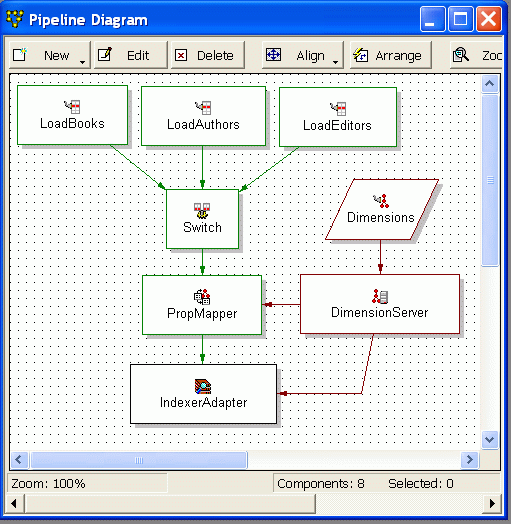With one exception, the pipeline used for an application that implements EQL does not have any special configuration requirements.
The exception is if you purchased the RRN module and will be using it to apply relationship filters at query time. In this case, you will probably be using a Switch join in the pipeline. Note that using a Switch join is not mandatory for RRN queries, but you will use one if you want to keep different record types uncombined.
For example, the pipeline used in the application that provides the sample queries (for other sections of this chapter) assumes that the data set has three types of records. The pipeline looks like this in Developer Studio’s Pipeline Diagram:
The pipeline has three record adapters to load the three record types (Book records, Author records, and Editor records). These are standard record adapters and do not require any special configuration.
The record assembler (named Switch) is used to implement a Switch join on the three sets of records. The Sources tab is where you add the record sources for the record assembler, which are the three record adapters:
The record assembler will process all the records from the three record adapters. However, the records are never compared or combined. Because the three record types are not combined, you can use RRN queries to apply relationship filters. For more information about these types of queries, see the topic “Record Relationship Navigation queries."



